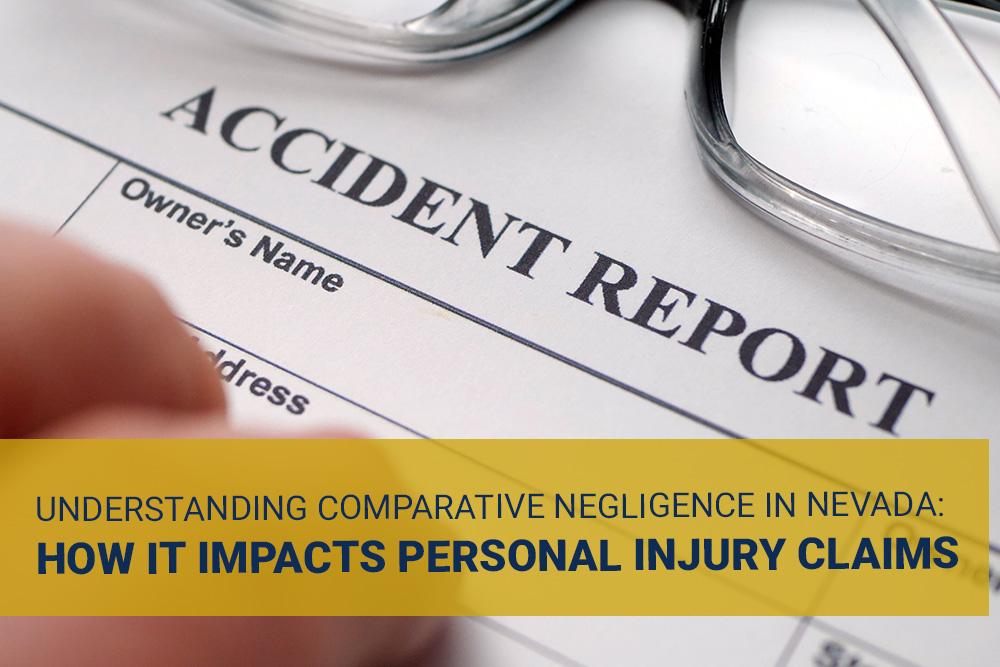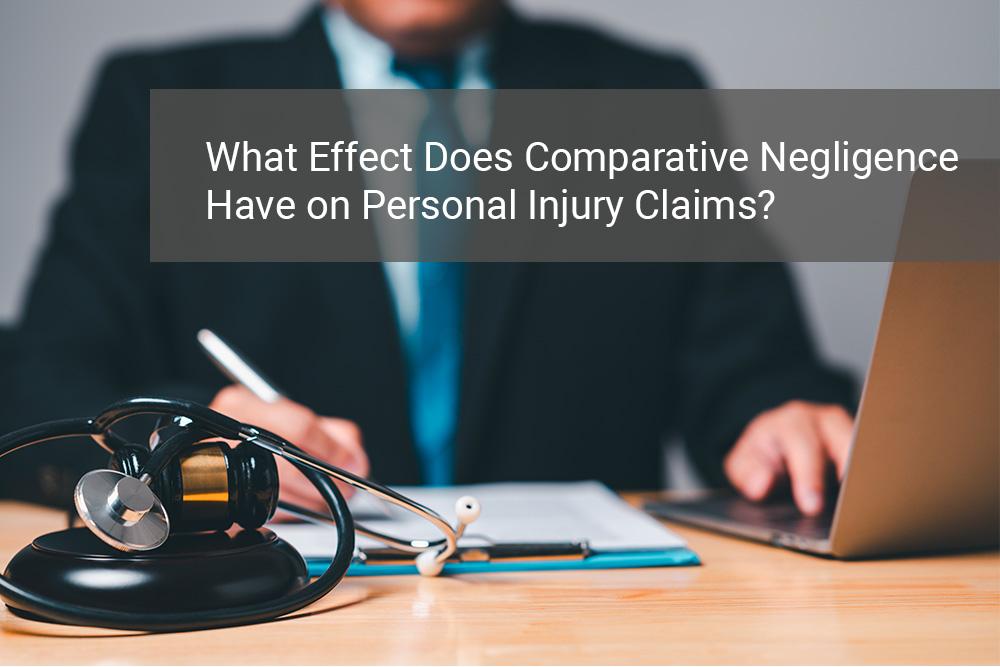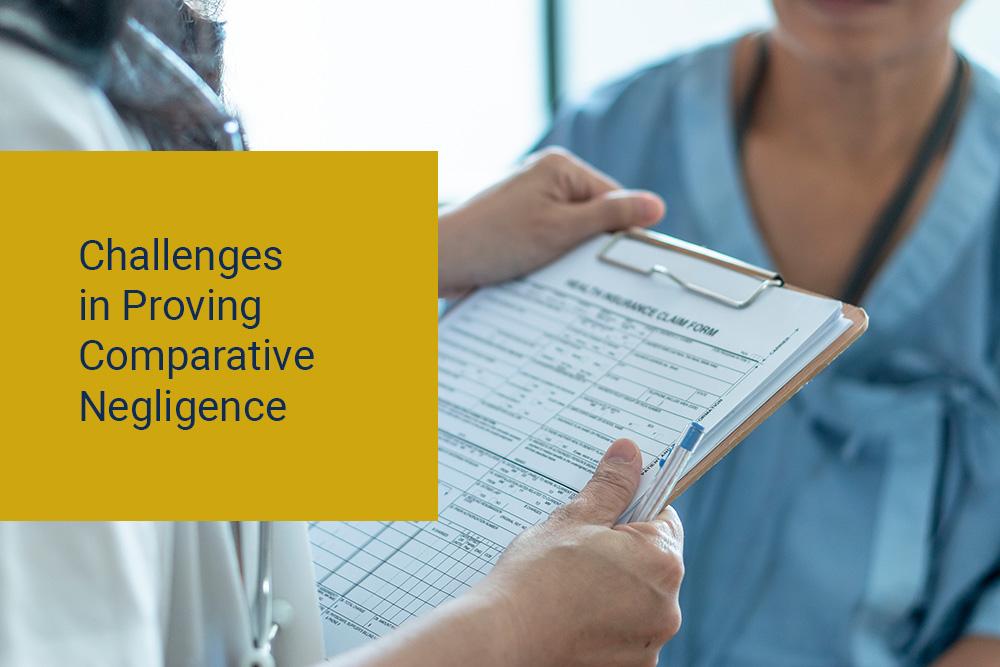by senditrising
Share
Share

Accidents happen, and identifying who is at fault can be difficult. Understanding the idea of comparative negligence is vital in personal injury law, especially in a State like Nevada, with its own set of standards. This article will explain comparative negligence and how it impacts personal injury claims in Nevada.
What exactly is comparative negligence?
Comparative negligence is a legal idea used to assess fault in an accident involving multiple parties. In layman’s words, it is a method of determining who is responsible for what and to what extent. For example, if two drivers are involved in a car accident, it is unusual that one is entirely to blame. Both may have contributed to the accident in some way—for example, one may have been speeding while the other failed to signal. Comparative negligence helps assign a percentage of fault to each party involved, ensuring that each is liable for the appropriate damages.
The Modified Comparative Negligence Rule in Nevada
Nevada follows a “modified” comparative negligence rule. This means that if you are somewhat to blame for an accident, you can still seek compensation, but there are restrictions. According to Nevada Revised Statutes (NRS) Section 41.141, you can only claim damages if you are judged to be 50% or less at fault for the accident. This is commonly known as the “50% rule.”
For example, if you were in a car accident and were judged to be 30% at blame, and your total damages were $10,000, you may receive $7,000. This is calculated by dividing your total damages ($10,000) by your blame proportion (30%), yielding a recoverable sum of $7,000.
What Effect Does Comparative Negligence Have on Personal Injury Claims?

When pursuing a personal injury claim in Nevada, it is essential to understand the modified comparative negligence rule. The rule directly impacts the amount of compensation you can receive. You will not be able to recover any damages if you are determined to be more than 50% at blame for the accident, regardless of the severity of your injuries or the severity of your losses.
Consider the following example to demonstrate this principle. Assume you were in a grocery store slip and fall accident and incurred $20,000 in hospital fees. After examining surveillance footage and other evidence, it was found that you were 20% to blame for failing to see the wet floor sign, while the business was 80% to blame for failing to clean the spill thoroughly. In this situation, your recoverable damages would be lowered by your 20% fault, allowing you to sue the business for $16,000 in damages.
The Role of the Jury in Determining the Percentage of Fault
In personal injury cases, the jury plays an essential role in assessing each party’s degree of blame. The jury will issue two verdicts after hearing all of the evidence. The first verdict will state the overall amount of damages you are entitled to, regardless of your level of fault. The second verdict will specify the percentage of negligence due to each party involved in the accident.
For example, if you were in a car accident that caused $100,000 in damages, the jury may determine that you were 25% responsible and the other driver was 75% at fault. The judge would then decrease your $100,000 damage award by your 25% share of the fault, leaving you with a final award of $75,000 in this instance.
Cases Where Comparative Negligence Does Not Apply
Nevada’s modified comparative negligence rule has restrictions and does not apply to all personal injury cases. Exempts are two major categories: strict liability claims and intentional torts.
- Strict liability
In strict liability cases, such as defective product claims, the focus is not on negligence but on whether the product was inherently unsafe. If a defective product causes you harm, its manufacturer may be held accountable, regardless of your conduct.
- Intentional torts
Another exemption is intentional torts, such as assault or battery. The defendant’s acts are planned in certain situations, rendering the concept of shared fault irrelevant. Someone who intentionally harms you can be held entirely liable for all damages, regardless of your contributory negligence.
Understanding these exceptions is critical when filing a personal injury claim because they might substantially influence your ability to recover damages. Always consult a skilled attorney to negotiate the complexities of Nevada’s negligence laws.
Challenges in Proving Comparative Negligence

Proving comparative negligence is often an arduous task, requiring intricate evidence gathering and skillful presentation in court. One of the chief challenges lies in the subjective nature of the concept itself. While hard evidence like surveillance footage or eyewitness accounts can lend substantial weight to a claim, the court’s perception of recklessness or negligence is often contingent on how compellingly the evidence is put forth.
For example, eyewitness testimony may only be credible if the witness has no personal stake in the case’s outcome and if their recollection of the events is consistent. Similarly, physical evidence like skid marks or vehicle damage must be professionally analyzed to make a compelling argument about the degree of each party’s fault. It is prudent to enlist forensic experts who can substantiate your claims in an understandable way to a jury that may not have technical expertise.
Impact on Insurance Claims and Settlement Negotiations
Understanding Nevada’s comparative negligence laws is also imperative during insurance claims and settlement negotiations. Insurance adjusters are astute in leveraging any inkling of fault on your part to minimize their liability. A refined awareness of comparative negligence principles can effectively countermeasures during these discussions. If you are aware that your degree of fault is substantially less than 50%, your negotiating position is correspondingly strengthened.
Moreover, insurance policies often contain intentionally ambiguous language, enabling insurance companies to interpret provisions in a way that is favorable to them. A seasoned attorney can guide you through these semantic labyrinths, ensuring you are not unfairly disadvantaged due to the nebulous wording in insurance contracts.
Statute of Limitations: A Critical Consideration
Lastly, being aware of the time limitations within which you must file a claim is crucial. Under Nevada law, a personal injury lawsuit must typically be filed within two years from the date of the accident. Failure to meet this deadline could forever extinguish your right to seek compensation.
What Should You Do If You’ve Been in An Accident?

If you are in an accident in Nevada, you should prioritize immediate medical care. Following the stabilization of your health, the next critical step is to speak with a personal injury attorney aware of Nevada’s special comparative negligence rules. A skilled attorney can evaluate the specifics of your case, assist you in gathering critical evidence such as photographs and witness statements, and expertly negotiate with insurance companies on your behalf. This multi-step process increases your chances of a favorable settlement and relieves the stress of navigating the legal system alone.
Here are some additional tips to keep in mind:
- Don’t Admit Fault: Even if you believe you are partially to blame for the accident, avoid admitting fault at the scene. This could affect your ability to recover damages later.
- Collect Evidence: Gather as much evidence as possible, including witness accounts, photographs, and video footage.
- Be Patient: Personal injury cases can be lengthy and time-consuming. Allow your attorney to handle the complexities of the case while you concentrate on recovering from injury.
Conclusion
Anyone involved in a personal injury claim must understand the concept of comparative negligence and how it applies in Nevada. Being aware of everything from the percentage of fault to the function of the jury and the types of circumstances where comparative negligence does not apply can significantly impact the outcome of your case.
For Professional Advice, Contact Moss Berg Injury Law.
If you have any questions about how comparative negligence may affect your personal injury claim in Nevada, please contact Moss Berg Injury Law. Our team of experts are here to assist you through the complexity of the legal system and achieve the compensation you deserve.


